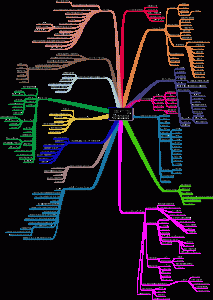So here we are at last, the sixth and final module that is “research methods”. I know that I would like to do my dissertation on learning spaces as my institution has just opened it’s doors to a new Library and Student Services centre called Augustine House. If you want a feel for the place, there’s an interactive floorplan that you can view and there is also a special Flickr set (compare these against the previous library provision). Incidently, anyone wanting to look at different examples of learning spaces that are situated across the UK can view JISC Infonet’s Flickr pages.
JISC (2006) informs us that learning spaces:
…should be able to motivate learners and promote learning as an activity, support collaborative as well as formal practice, provide a personalised and inclusive environment, and be flexible in the face of changing needs. (p. 3)
However, as the JELS (2009) report found out, there is very little by way of evaluating the effectiveness of learning spaces and a fair bit of research would be needed to begin to understand what is going on. Temple (2007), in his literature review, is particularly scathing on how little we understand such spaces:
…if the curriculum in higher education is a set of experiences, that a student inhabits, experiences that that arise from a student’s interaction with his or her ‘learning environment’, then any attempt to trace the influence of one particular thread of experience may well be doomed… (p. 69)
So, over the last 18 months I have been involved in a part JISC-funded project that is part of their Institutional Innovation Programme, which:
…represents a £13.08m investment aimed at supporting existing institutional strategies by providing solutions to institution-wide problems, based upon proven practices, technologies, standards and services. The solutions will act as exemplars to other institutions by demonstrating innovation and good practice, and building knowledge and experience, which can be shared across institutions.
Our project, which we called iBorrow, has deployed 200 location-aware (re: wireless) netbooks within Augustine House which students and staff can “borrow” just by taking them out of the recharging cabinets as if they were picking up a book from off a shelf. One of the many things that we want to see is if it can provide a large-scale demonstration of how thin-client notebooks with location-aware technology can enable us to not only provide “no fuss” access to a full range of software and learning resources but also effectively manage the configuration of the facilities within the large flexible learning spaces of Augustine House.
As part of my preparation and understanding of learning spaces, I have managed to fill three A4 box folders of papers on the subject as well as looking at the notions of “place” and “space” under the auspices of environmental psychology. To help me make sense of all of this information, I have devised a mind map (click on the image below to enlarge) that covers a large number of themes (and I suspect that I have only scratched the surface).
References
JELS. (2009). A Study of Effective Evaluation Models and Practices for Technology Supported Physical Learning Spaces. Bristol: JISC. Available at: http://www.jisc.ac.uk/whatwedo/projects/learningspaces08.aspx [Accessed 21 January 2010].
JISC. (2006). Designing Spaces For Effective Learning – A Guide To 21st Century Learning Space Design. Bristol: JISC. Available at: http://www.jisc.ac.uk/publications/programmerelated/2006/pub_spaces.aspx [Accessed 21 January 2010].
Temple, P. (2007). Learning Spaces for the 21st Century: A review of the literature. York: The Higher Education Academy. Available at: http://www.heacademy.ac.uk/projects/detail/lr_2007_temple [Accessed 21 January 2010].
